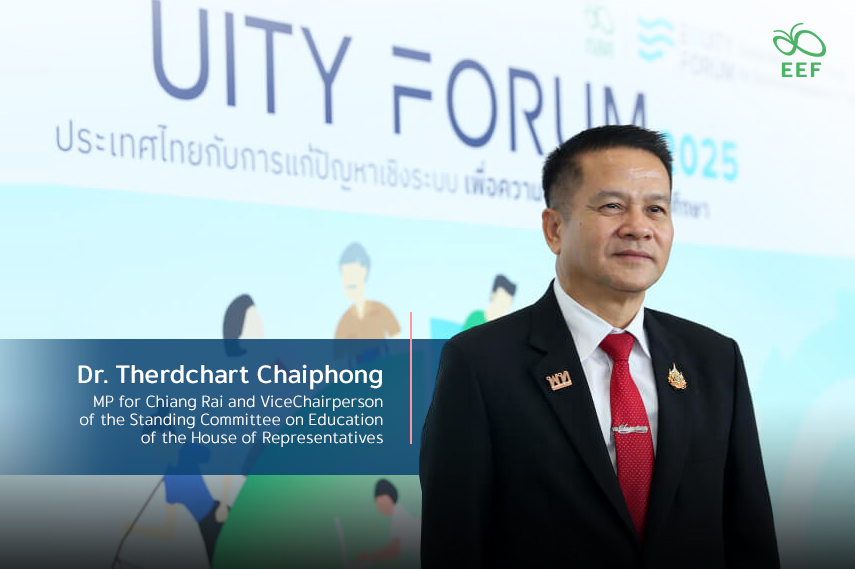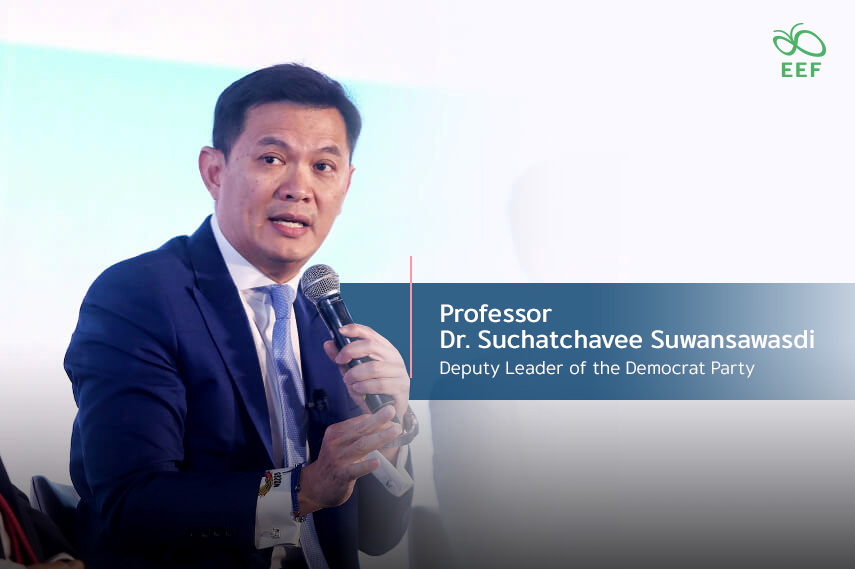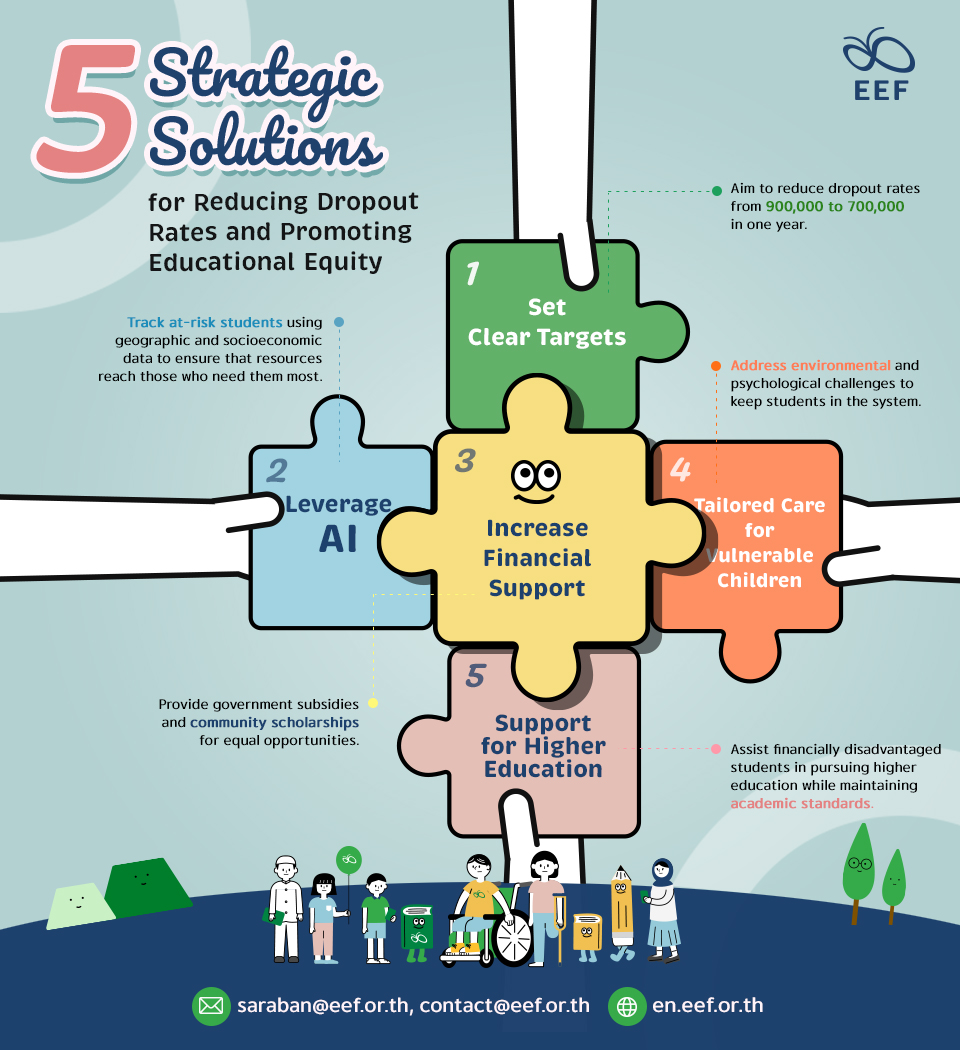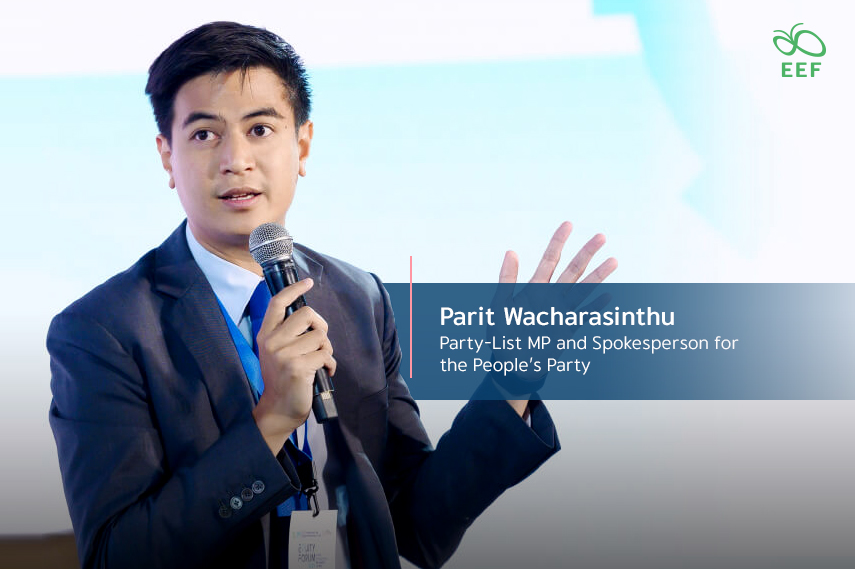
Thailand’s educational system faces a critical challenge—an overwhelming budgetary imbalance that limits meaningful student development. Currently, 85% of the Ministry of Education’s budget is consumed by personnel costs, leaving only 15% for initiatives that directly benefit students. This disproportion severely constrains the implementation of key policies, such as the “Free Education” initiative, which remains far from fully realized. The system’s limited flexibility hampers innovation and restricts its capacity to adapt and expand to meet modern educational demands, particularly affecting the quality and accessibility of learning for the most vulnerable.

Addressing these limitations requires a major reallocation of resources alongside comprehensive curriculum reform. Cost-effective models like “Anywhere Anytime Learning” offer practical ways to enhance educational access without significant financial strain. Shifting from rote memorization to competency-based learning—especially at the primary level—is crucial for preparing students for the demands of the modern world. A deep understanding of why students drop out, gained through rigorous qualitative and quantitative research, is equally essential. Tailored interventions can then be developed to address individual needs more effectively. The Ministry’s forthcoming 2025 core curriculum revision reflects this direction, aiming to embed competency-based assessments for a more dynamic, adaptable educational system. As Dr. Siripong Angkasakulkiat, Vice Minister for Education, noted, recognizing that not all students who leave school are eager or able to return to traditional classrooms compels the system to create alternative, personalized pathways that re-engage them on their own terms.

Compounding these structural challenges is the persistent gap between urban and rural education, driven largely by unequal access to resources. Geographic distance continues to be a major obstacle, exacerbating disparities in quality and opportunity. Dr. Therdchart Chaiphong, MP for Chiang Rai and Vice Chairperson of the Standing Committee on Education of the House of Representatives, reflected on his early experiences as a young school principal in rural Thailand, where the widening educational gap was evident and closely tied to income and asset inequality. The current centralized funding model often neglects these realities, worsening the divide between large urban schools and their remote, shrinking counterparts. Without reform, these disparities will only deepen.

Decentralization emerges as a necessary step to bridge this divide. Localized decision-making and resource allocation would empower communities to address their unique educational challenges more effectively. Structural adjustments—such as the formation of a dedicated subcommittee to oversee small schools—could safeguard equitable funding and ensure access to essential resources and extracurricular activities. A holistic overhaul of the educational system, including long-overdue reform of the National Education Act—which has remained unchanged for over 25 years—is essential, with a focus on improving resource management, enhancing teacher development, and establishing a coherent framework that supports student progression from kindergarten through to university. Strengthening these foundations would enable the system to better respond to diverse local needs and effectively reduce systemic inequalities.

Equally vital is the availability of accurate, real-time data to guide targeted interventions. Without reliable information, efforts to address dropout rates, identify at-risk students, and resolve access issues will fall short. Professor Dr. Suchatchavee Suwansawasdi, Deputy Leader of the Democrat Party, emphasized that the absence of precise data not only weakens policy responses but also risks turning educational inequality into an insurmountable crisis. Detailed data enables decision-makers to direct resources where they are most needed, making interventions timely and impactful. In response, five strategic measures have been proposed to counter these challenges.

5 Strategic Solutions for Reducing Dropout Rates and Promoting Educational Equity
- Set Clear Targets — Aim to reduce dropout rates from 900,000 to 700,000 in one year.
- Leverage AI — Track at-risk students using geographic and socioeconomic data to ensure that resources reach those who need them most.
- Increase Financial Support — Provide government subsidies and community scholarships for equal opportunities.
- Tailored Care for Vulnerable Children — Address environmental and psychological challenges to keep students in the system.
- Support for Higher Education — Assist financially disadvantaged students in pursuing higher education while maintaining academic standards.

Parit Wacharasinthu, Party-List MP and Spokesperson for the People’s Party, concluded the forum by underscoring the need for a unified, cross-sectoral approach to tackle these systemic issues. Despite Thailand allocating around 4.6–4.7% of its GDP—approximately 300 billion Thai Baht—to education, only 25% of that amount effectively reaches students, while the bulk is absorbed by personnel expenses. Centralized budget management often diverts funds to non-essential projects, leaving critical infrastructure needs unmet. Moreover, the per-head funding formula further marginalises small schools, intensifying urban-rural disparities. A strategic shift is required to rectify these imbalances. To address these challenges, five strategic solutions are proposed.

5 Investment Strategies for Educational Equity
- Invest Earlier — Support Early Childhood Education and enhance Child Development Centers (CDCs) to operate year-round, laying the foundation for future learning.
- Invest Longer — Promote Lifelong Learning through Skill Development Coupons and cash support to ease the financial burden of upskilling.
- Invest Closer — Decentralize decision-making, empowering schools and educators to allocate budgets based on local needs.
- Invest Broader — Strengthen the learning ecosystem by involving families and communities, addressing issues like food insecurity and domestic violence.
- Invest Deeper — Utilize integrated data to allocate resources equitably, ensuring personalized support for all students to pursue higher education.
Through these reforms, Thailand has the opportunity to create an educational system that is both resilient and equitable—one that ensures every learner, regardless of where they come from or the circumstances they face, has the chance to realize their full potential. This vision for an inclusive future can only be achieved through collective action. By investing in the people who shape education, we can overcome the systemic barriers hindering progress and create a system that benefits all—a mission perfectly encapsulated by the Equitable Education Fund (EEF) Thailand, which aims to reduce educational inequality through research, collaboration, and support for children, youth, and adults in need.
All For Education is all about people; only when all is in for education is Education For All. Join the movement to reduce educational inequality. Support the EEF by donating to fund research, partnerships, and assistance for children, youth, and adults in need of educational support. Click the link to contribute today and help create a society where education is open and equal for all. Together, we can make a lasting impact.

